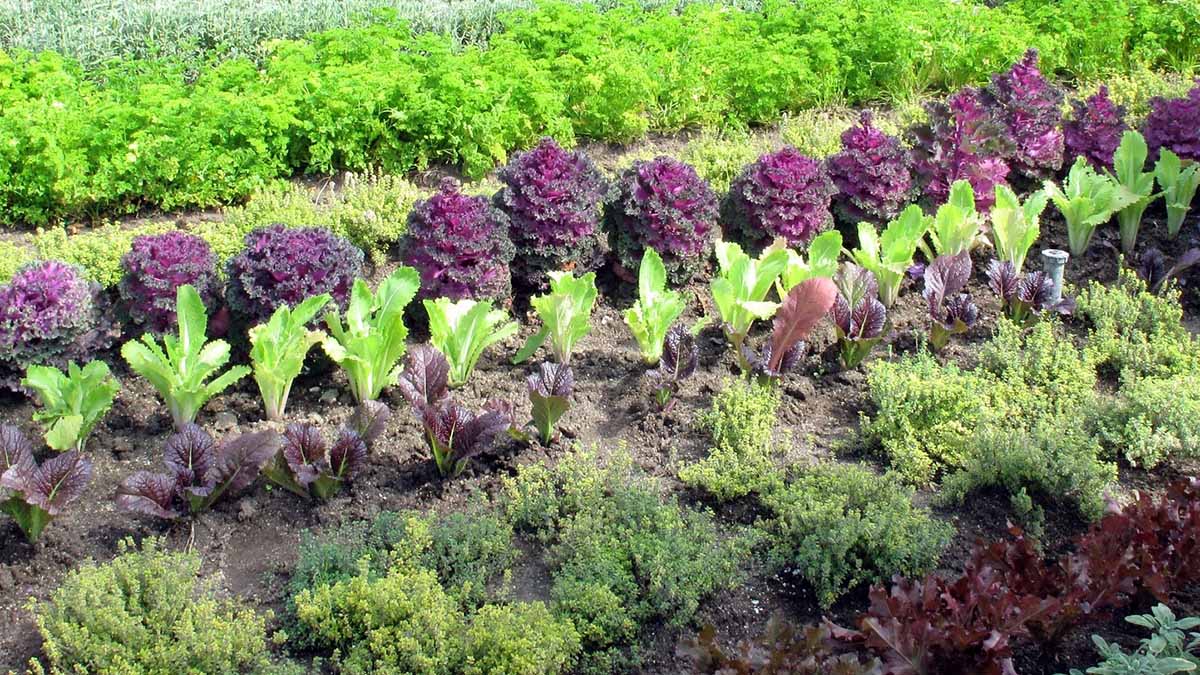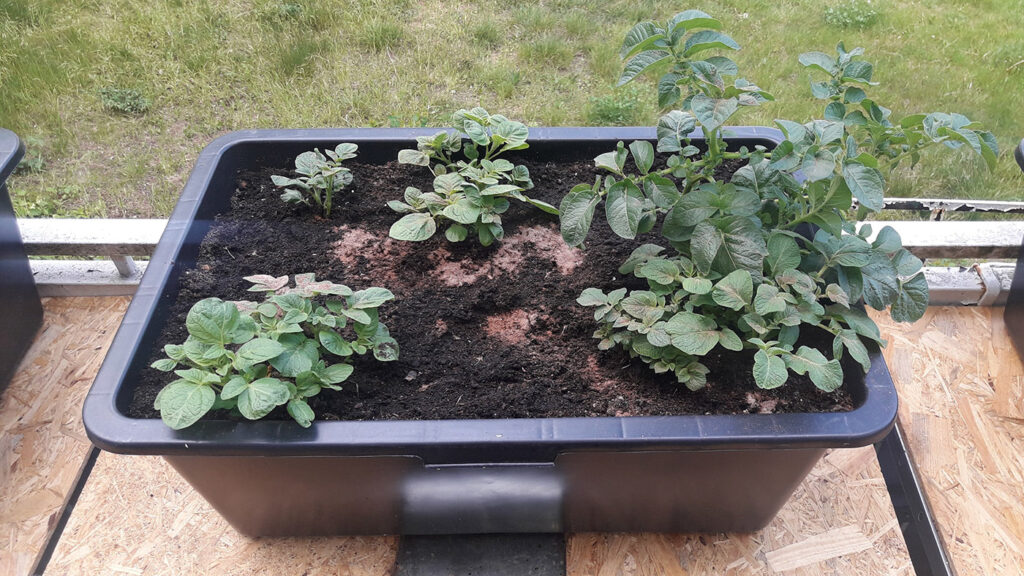Physical Address
304 North Cardinal St.
Dorchester Center, MA 02124
Physical Address
304 North Cardinal St.
Dorchester Center, MA 02124

The objective of this guide is to help and guide you to successfully create your own fully edible, near-closed-loop Edible Indoors Garden using techniques that range from hydroponics and vertical stacks, to microgreens and algae thanks: plant potatoes, seeds, legumes, leafy green, mushrooms and much more fully indoors.
Note: this is a work in progress, and it will be updated regularly.
The objective of this guide is to help and guide you to successfully create your own fully edible, near-closed-loop Edible Indoor Garden using techniques that range from hydroponics and vertical stacks, to microgreens and algae thanks: plant potatoes, seeds, legumes, leafy green, mushrooms and much more fully indoors.
The objective: this guide started as a journal for my own Edible Indoor Garden project. Eventually, as I gained more practical experience, researched the different topics involved and successfully managed to create my garden, the journal turned into an information dense and extremely useful reference and technical guide, which now I’m sharing with you.
Note: for a reference guide about non-edible Indoor Plants see: The Indoor Plants Reference Guide – An Easy to Follow Guide
The following is an index to the different sections of this guide. Use these links to navigate the guide.
In order to make a better use of this indoor gardening guide, you can also learn about vitamins, essential minerals, electrolytes and key nutrients following our Nutrition Reference Sheets series:
| Component | Nutrient Focus | Grow Method |
|---|---|---|
| Potatoes | Carbs, fiber, B6 | Raised beds |
| Sprouts | C, K, A, folate | Jars or trays |
| Microgreens | Vitamin and antioxidant-rich greens (vitamins A, C, K, etc.) | Hydroponic trays. |
| Beet greens | A, K, magnesium | Vertical beds |
| Garlic, Onions | Immune support, Vitamin C, Vitamin B6, Potassium, Folate (B9) | Soil jars |
| Mushrooms | D, B-vitamins, fiber, protein, minerals | Log bags, crates |
| Herbs | C, K, minor nutrients | Pots/trays |
| Flax/Chia | Omega-3, magnesium | Soil bed or bin |
| Spirulina | Protein (up to 60–70% protein by weight) | Algae growth tank. |
This combo gives you a near-complete nutrient profile.
The following are a list of the most efficient food items you can grow in your Edible Indoor Garden based on a formula that takes the nutritive values, the yields, the time and effort needed, and the space required. In short, if you want to maximize the nutritional yield of your indoor garden, these are the items you need to prioritize:
See the Potatoes Planting Section for more in-depth information.
See the Planting Guide section for more information about how to plant potatoes indoor.
See the Planting Guide section for more information about how to plant potatoes indoor.
Tanks or bioreactors with spirulina (edible blue-green algae) are incorporated for an extra boost of protein (up to 60–70% protein by weight) and essential fatty acids. Spirulina grows rapidly in water with dissolved nutrients and light; yields can reach ~10 g dry per m² per day (~3–4 kg/m²/year dry biomass). The harvested algae can be dried into protein powder or formed into cakes/paste and even contribute vitamin B12 (spirulina and certain mushrooms are among the few non-animal B12 sources).
These items are considered alternative or additional, they aren’t as efficient as the previous ones mentioned, but they add a lot of variety, vitamins and anti-oxidants to your diet.
A patch of peanuts or soybeans provides essential fats and additional protein. These crops can be grown in rotation with potatoes in soil beds or separate hydroponic tubs. Expected yield from 100 m² of peanuts is on the order of 30 kg of nuts (containing ~15 kg oil and ~8 kg protein). While lower yielding in calories than tubers, this is critical for dietary fat (peanuts are ~50% oil) and for nutrient diversity (vitamin E, magnesium, etc.).
In addition to microgreens, some crops will be grown to a slightly larger stage (e.g. lettuce, kale, basil, cilantro in hydroponic towers or NFT channels) for culinary variety. These have quick turnover and moderate yield, and their presence aids morale by providing fresh flavors and textures.
Seeds like mung beans, lentils, and wheat can be sprouted in jars every few days. Sprouts require no soil or light (just moisture) and provide crunchy fresh vegetables rich in vitamin C and enzymes to complement microgreens. This is a low-tech, low-space addition to the diet.
I think I don’t need to mention that space is specially limited for fruiting trees when planting indoors, but fast fruiting plants like dwarf tomato vines, chili peppers, or strawberries can be trellised along walls or in small hydroponic units as “luxury” crops. They improve diet palatability and provide vitamins (like vitamin C in peppers/berries). These will not be staples, but a few dozen square meters allocated here can yield modest fruit treats (e.g. cherry tomatoes or berries year-round).
This section contains a guide to the different technologies and methods used in indoor planting. Since adding these directly into this article would make the article way too long, we’ve decided to split them in sub-articles in order to keep the guide’s navigation easier:
Potatoes were the caloric backbone of several cultures and human settlements through history for a very good reason. They are a proven staple for closed habitats – rich in carbohydrates and providing significant protein with a good amino acid profile. The plan uses both white potatoes and sweet potatoes (sweet potatoes add beta-carotene for Vitamin A). Key features of the potato cultivation system:
Note: you’ll see NASA mentioned a lot in the following section, and that’s because NASA did a ton of research regarding growing potatoes in indoor environments, since they’re an excellent nutritional source for future space colonies in enclosed environments.
You don’t need a big plot of land to grow potatoes, as a matter of fact you don’t need any land!, you can grow a surprisingly large amount of potatoes just using jars, pots, half-barrels and other small containers. This tutorial will guide you through the process in a friendly and easy to follow manner.
You can check the full guide to growing potatoes in small containers following this link: Growing Potatoes in Small Containers.

Potatoes will be grown in a nutrient film technique (NFT) or drip-irrigation hydroponic system with a shallow inert medium (e.g. coarse vermiculite or wood-fiber substrate). Research shows hydroponic methods can triple tuber yields compared to soil farming. Each potato plant is started from a disease-free seed tuber or stem cutting and grown under optimal conditions (CO₂-enriched air, precise nutrients, no pests).

Following NASA test protocols, potato chambers are kept around ~22°C days/14°C nights, ~85% relative humidity, and high light intensity ~400 µmol/m²·s for 16–24 hours photoperiod. This maximizes photosynthesis and tuber formation. Long day/continuous lighting is used to speed growth (potatoes can yield well under continuous light given proper temperatures.
With intensive hydroponics, continuous potato production is achieved by staggered planting. Rather than one big harvest, a section is harvested each week once the system is at full capacity. NASA trials achieved ~37.5 g dry tuber per m² per day (≈139 kcal/m²/day) in steady-state. This equates to roughly 21–22 kg of fresh potatoes per m² over ~5 months (one crop cycle). Our design aims for ~2 harvests per year per plot, yielding ~40+ kg/m²/year. In total, 1,000 m² devoted to potatoes could produce on the order of 40,000 kg of potatoes per year (~136 million kcal), enough to supply the bulk calories for ~150 people. Potatoes are extremely space-efficient under these conditions – they can produce roughly twice the edible food per unit light compared to grain crops.
Fast-maturing, high-yield potato varieties (such as Norland red or other high-tuber-count types) will be used, as well as orange-fleshed sweet potato cultivars from NASA research. Plants are grown in troughs or large tubs with nutrient solution flowing through. As tubers develop, they form above the root zone in the aerated substrate – a black plastic film covers the media to block light (preventing tuber greening).
Potatoes are versatile for processing. They can be eaten fresh (boiled, baked), or dehydrated into potato flakes/flour for long-term storage (dried potato can last >5 years if sealed). Up to 6 months storage is possible for fresh tubers in a cool, dark, ventilated storage room (the settlement can designate an insulated cellar space for this). This allows buffering of any production variability. Potatoes require minimal processing and their proteins are high-quality, with a good balance of essential amino acids (supporting the diet’s protein needs along with other sources).